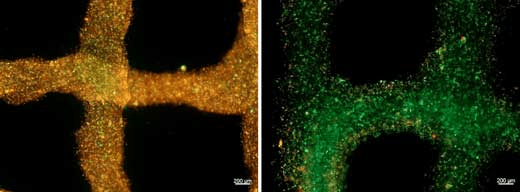Tissue engineering or regeneration is the process of improving upon or replacing biological tissues by combining cells and other materials with the optimal chemical and physiological conditions in order to build scaffolds upon which new viable tissue can form. We’ve seen many examples of 3D printing being used to accomplish this task.
.
The potential to engineer new tissues this way provides an answer to organ transplant shortages and applications in drug discovery. However, to become viable tissues, these cells need oxygen delivered to them via blood vessels, which, in transplanted tissue, can take several days to grow.
.
But a collaborative group of researchers is working on a solution: an oxygen-releasing bioink that can deliver this all-important element to the cells in 3D bioprinted tissues. This allows the cells to survive while they’re waiting for blood vessels to finish growing.
.
Heart cells in a bioink (L) without oxygen […]
Case Study: How PepsiCo achieved 96% cost savings on tooling with 3D Printing Technology
Above: PepsiCo food, snack, and beverage product line-up/Source: PepsiCo PepsiCo turned to tooling with 3D printing...






























0 Comments